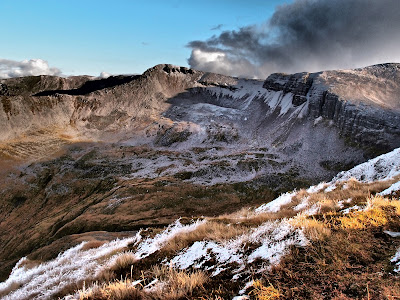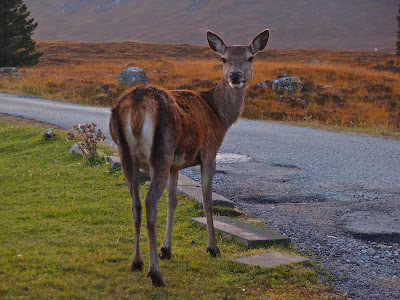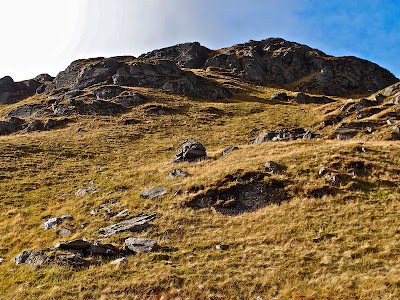 |
| My renewable energy roof |
Scotland is already generating 35% of its electricity through renewable sources. The huge post-war hydro schemes were a substantial part of this and wind turbines and solar have made up most of the rapid increase over the last decade. There are also an increasing number of micro-hydroelectric schemes that I have discovered during walks in remoter glens. The great potential of wave and tide power has yet to be harnessed on a commercial basis and current estimates are that it will be 2020 before this is possible.
I remain open-minded on the environmental impact of wind farms having seen the devastation of landscapes in the United States. We must protect our sensitive areas but there are many unpopulated areas of unproductive land and no intrinsic landscape quality that might be enhanced by some brutally functional renewable engineering totems. Just as steam locomotives, bridges, viaducts and reservoirs captured our imaginations in the past.
I remember as a student in Liverpool walking the bleak seafront at Bootle and Crosby prior to the Burbo Bank offshore wind farm. This has been transformed by the wind turbines as well as Andrew Gormley's statues of bathers. Crosby is now an award-winning beach with distinctive features adding interest to the bleak vista across the Liverpool Bay. The proposals for wind turbines in the Forth estuary, east of Angus, the central belt of Shetland and the Monadhliaths, an empty wilderness seldom visited by anyone, would add interest to these land and seascapes. In the way that the existing Burra Dale turbines in Shetland give a sense of pride compared to the incongruous industrial oil-fired generating plant a couple of miles down the road in Lerwick. Conversely, I was delighted when the proposals for a massive wind farm on the flat peatland moors of Lewis were turned down in 2008, this landscape is far too sensitive.
Ten years or so ago I was involved in identifying locations for new wind farms and negotiating with energy companies. One of my main concerns, apart from protecting the outstanding landscape areas, was to encourage community involvement in the planning and ownership of wind farms and ensure a funding stream for the benefit of the local community. Landowners have benefited hugely from the rentals for wind farms and capturing some of these income streams for the local communities is vital to prevent the exploitation of customers that is endemic in the private provision of existing energy sources.
Competition has rewarded the companies significantly at the expense of consumers who are forced to 'go compare' the devious tariff games played by the big six providers. I don't want to change my energy provider in the same way I don't want to spend hours trying to finesse my way through rail ticket scams or bank savings rates. I want honest and realistic pricing from companies that I can trust. Some ownership by the consumer usually goes some way to achieving this, which is why nationalisation is no longer the bogey it was painted in the Thatcher years.
At the more mundane local level, the most frequent question from my neighbours is how much electricity am I generating from my solar panels. The first year is just complete and the 16 solar panels have managed just short of 3000kWh during a largely sunless year. This meets about 75% of our needs over the year although we export most of the electricity generated in summer and are dependent on other sources at night and in winter. My estimate is that with the feed-in tariff it will take 7 or 8 years to cover the capital cost but the sense that we are doing a little to reduce the need for carbon-based electricity is perhaps the most important feel-good factor about the installation.























































